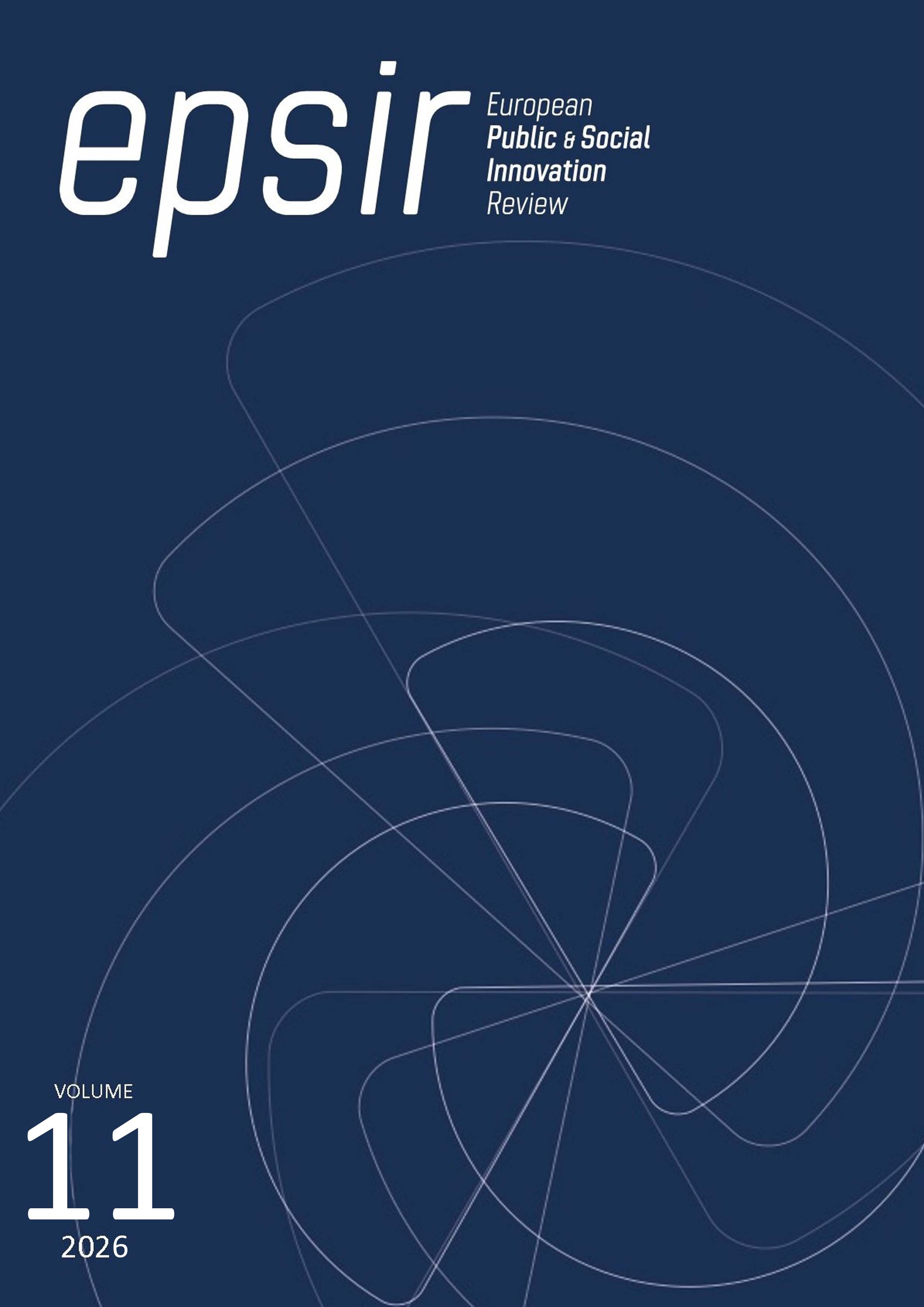Food in contextual art: concept, catalyst, or nexus
DOI:
https://doi.org/10.31637/epsir-2026-1652Keywords:
food, contextual art, urban spaces, social change, transformation of meanings, colaborative artistic practices, cooking, sharing foodAbstract
Introduction: This article analyses contextual artistic practices, whose central component consists of preparing, serving and sharing food; seeking to discern the functions of food in this type of intervention. Methodology: To this end, using the method of semantic analysis of critical and academic publications, we present a selection that reflects the evolution of this trend in art and exemplifies its main paths of development. Results: The first attempts to link life and art through food, such as artist restaurants, paved the way for incorporating food into creative production both as a material and as a relational element. Discussion: We observe that food can play three main roles within contextual art initiatives: serving as a link to unite the people involved, raising a reflection on the meanings linked to this universal action or presenting itself as a catalyst for change in the social fabric, in the perception of shared urban space or other areas selected as a target. Conclusions: The interpretation of these functionalities in each project influences the relationship established between its participants, the food and the place of action.
Downloads
References
Ardenne, P. (2006). Un arte contextual: creación artística en medio urbano, en situación, de intervención, de participación. CENDEAC. (La primera edición en francés: Un art contextuel: création artistique en milieu urbain, en situation, d’intervention, de participation. Flammarion, 2002).
Ballester, L. (2006). El análisis semántico y pragmático de las entrevistas de investigación. EMPIRIA. Revista de Metodología de Ciencias Sociales, 11, 107-132. https://doi.org/10.5944/empiria.11.2006.1111 DOI: https://doi.org/10.5944/empiria.11.2006.1111
Certeau, de M., Giard, L. y Mayol, P. (1999). La invención de lo cotidiano: 2. habitar, cocinar. Universidad Iberoamericana.
Chiodi, S. (2015). Artists’ Cafés. En G. Celant (Ed.), Arts & Foods: Rituals since 1851 (pp. 274-289). Mondadori Electa.
Claramonte, J. (2010). Arte de contexto. Nerea.
Clintberg, M. (2013). The Artist’s Restaurant: Taste and the Performative Still Life. PhD dissertation, Concordia University, Montreal, Quebec, Canada.
Cocina CoLaboratorio (2022). Tierra sostenible.
https://colaboratorykitchen.com/es/?story-894
Cocina CoLaboratorio. (2021). Construcción Social de una Cocina Laboratorio. https://colaboratorykitchen.com/es/?story-723
Cordón, F. (1980). Cocinar hizo al hombre. Tusquets Editores.
Díaz Ruiz, M. C. (2017). Arte y comida en la creación contemporánea desde un enfoque de género [Tesis doctoral, Universidad de Málaga]. RIUMA. https://hdl.handle.net/10630/15683
Fizell, M. R. (2021). Gastronomic Body Sensory and sociocultural dimensions of food art [Tesis doctoral. School of Art & Design Faculty of Arts, Design and Architecture. UNSW Sydney]. Unsworks. https://shorturl.at/2bVwS
Gilbert, S. M. (2014). The Culinary Imagination: From Myth to Modernity. W.W. Norton&Company.
Gómez García, P. (2010). Claude Lévi-Strauss. Vida, obra y legado de un antropólogo centenario. Gazeta de Antropología, 26(1), 2010. DOI: https://doi.org/10.30827/Digibug.6770
http://www.gazeta-antropologia.es/?p=1516
Hablarenarte (2023). Casa de comidas Carabanchel. https://www.hablarenarte.com/es/proyecto/id/casa-de-comidas-carabanchel
Hayden, D. (2023). La gran revolución doméstica. Puente editores.
Highmore, B. (2009). Bitter After Taste: Affect, Food, and Social Aesthetics. En M. Gregg y G. J. Seigworth (Eds.), The Affect Theory Reader (pp. 118-137). Duke University Press. DOI: https://doi.org/10.1215/9780822393047-005
Jordan, C. M. (2017). Directing Energy: Gordon Matta-Clark’s Pursuit of Social Sculpture. En Gordon Matta-Clark: Anarchitect (p. 45). Bronx Museum of the Arts.
Koczanowicz, D. (2017). Beyond taste: Daniel Spoerri’s art of feasting. Performance Research, 22(7), 92-99. DOI: https://doi.org/10.1080/13528165.2017.1353201
Montano, L. (2000). Performance artists talking in the eighties: sex, food, money, fame, ritual, death. University of California Press. DOI: https://doi.org/10.1525/9780520919662
Monteys, F. (2018). La arquitectura de la comida. Quaderns d'arquitectura i urbanisme, 1(271), 9-18. http://www.arquitectes.cat/es/revista-quaderns-darquitectura-i-urbanisme-0
Moravec, M. (2011). In the Name of Love: Feminist Art, the Women’s Movement and History. The Waitresses Unpeeled: Performance Art and Life, 71-85.
Puigjaner, A. (2014). Ciudad sin cocina. El Waldorf Astoria, apartamentos con servicios domésticos colectivos en Nueva York, 1871-1929. [Tesis doctoral, Universitat Polìtectica de Catalunya]. UPCommons. http://hdl.handle.net/2117/95471
Robles, S. (2015). Seis comidas compartidas.
https://www.santiagorobles.info/seis-comidas-compartidas/
Robles, S. (2016). Carpa Orgánica de la Soledad.
https://www.santiagorobles.info/carpa-organica-de-la-soledad/
Spoerri, D. (s. f.) Since 1970. Banquets. https://shorturl.at/76d0a
Steegmann, D. (2017). Ciudad casa comida. Una aproximación poliédrica a los límites entre lo público y lo privado. [Tesis doctoral, Universitat Polìtectica de Catalunya]. UPCommons. http://hdl.handle.net/2117/114437
Steel, C. (2022). Sitopía. Capitán Swing Libros. DOI: https://doi.org/10.4324/9781003285410-7
Steel, C. (2020). Ciudades hambrientas. Cómo el alimento moldea nuestras vidas. Capitán Swing Libros.
Świdziński, J. (1977). Sztuka jako sztuka kontekstualna/ Art as Contextual Art. Art text, Galería Remont.
Downloads
Published
How to Cite
Issue
Section
License
Copyright (c) 2025 Anna Borisova Fedotova

This work is licensed under a Creative Commons Attribution-NonCommercial-NoDerivatives 4.0 International License.
Authors who publish with this journal agree to the following terms:- Authors retain copyright and grant the journal right of first publication with the work simultaneously licensed under Creative Commons Non Commercial, No Derivatives Attribution 4.0. International (CC BY-NC-ND 4.0.), that allows others to share the work with an acknowledgement of the work's authorship and initial publication in this journal.
- Authors are able to enter into separate, additional contractual arrangements for the non-exclusive distribution of the journal's published version of the work (e.g., post it to an institutional repository or publish it in a book), with an acknowledgement of its initial publication in this journal.
- Authors are permitted and encouraged to post their work online (e.g., in institutional repositories or on their website) prior to and during the submission process, as it can lead to productive exchanges, as well as earlier and greater citation of published work (See The Effect of Open Access).
Funding data
-
Ministerio de Universidades
Grant numbers Proyecto I+D+i PID2023-149171OB-100 Prácticas artísticas colectivos y de contexto en entornos locales. Vías de inclusión social ante la crisis global



